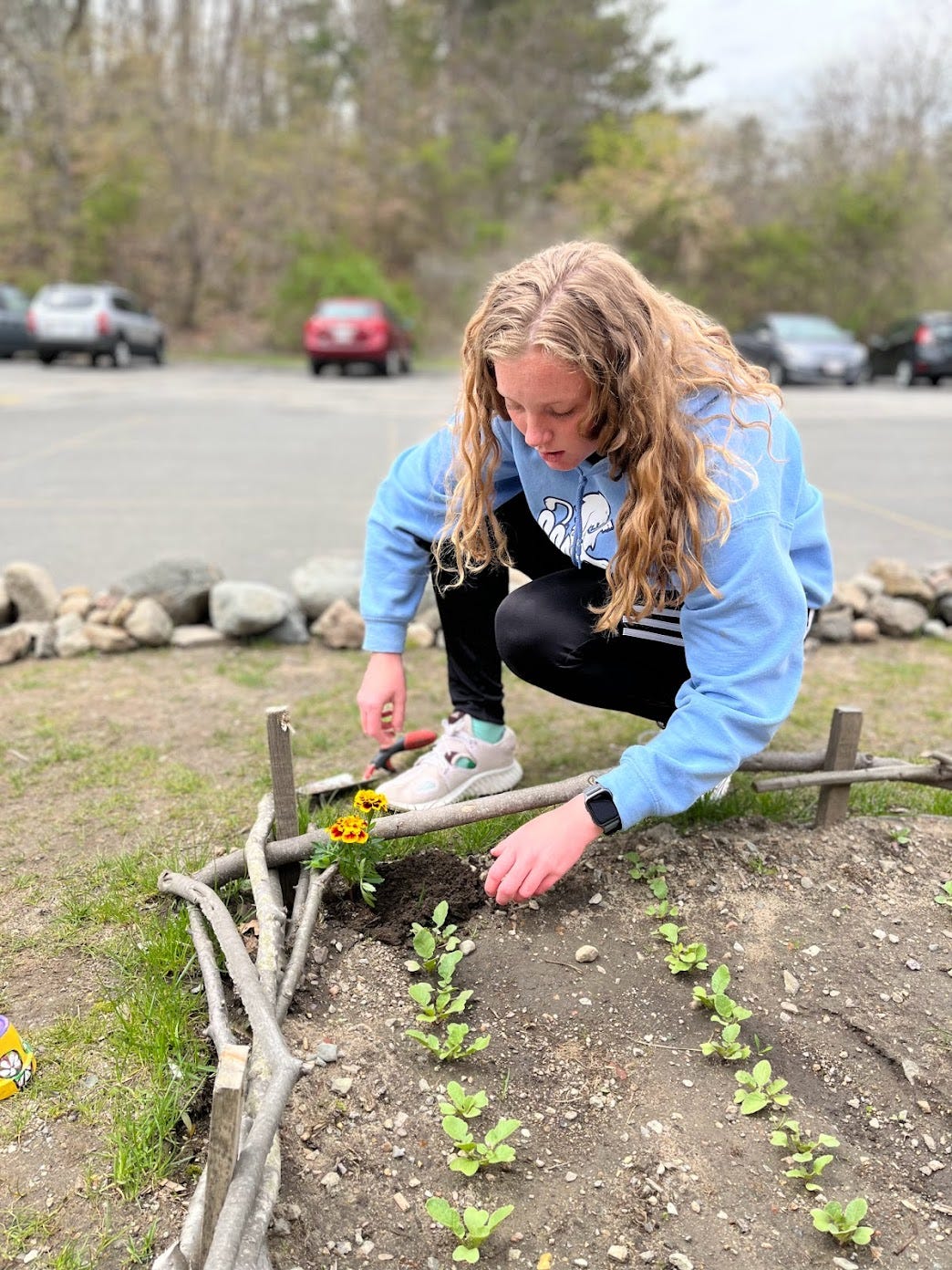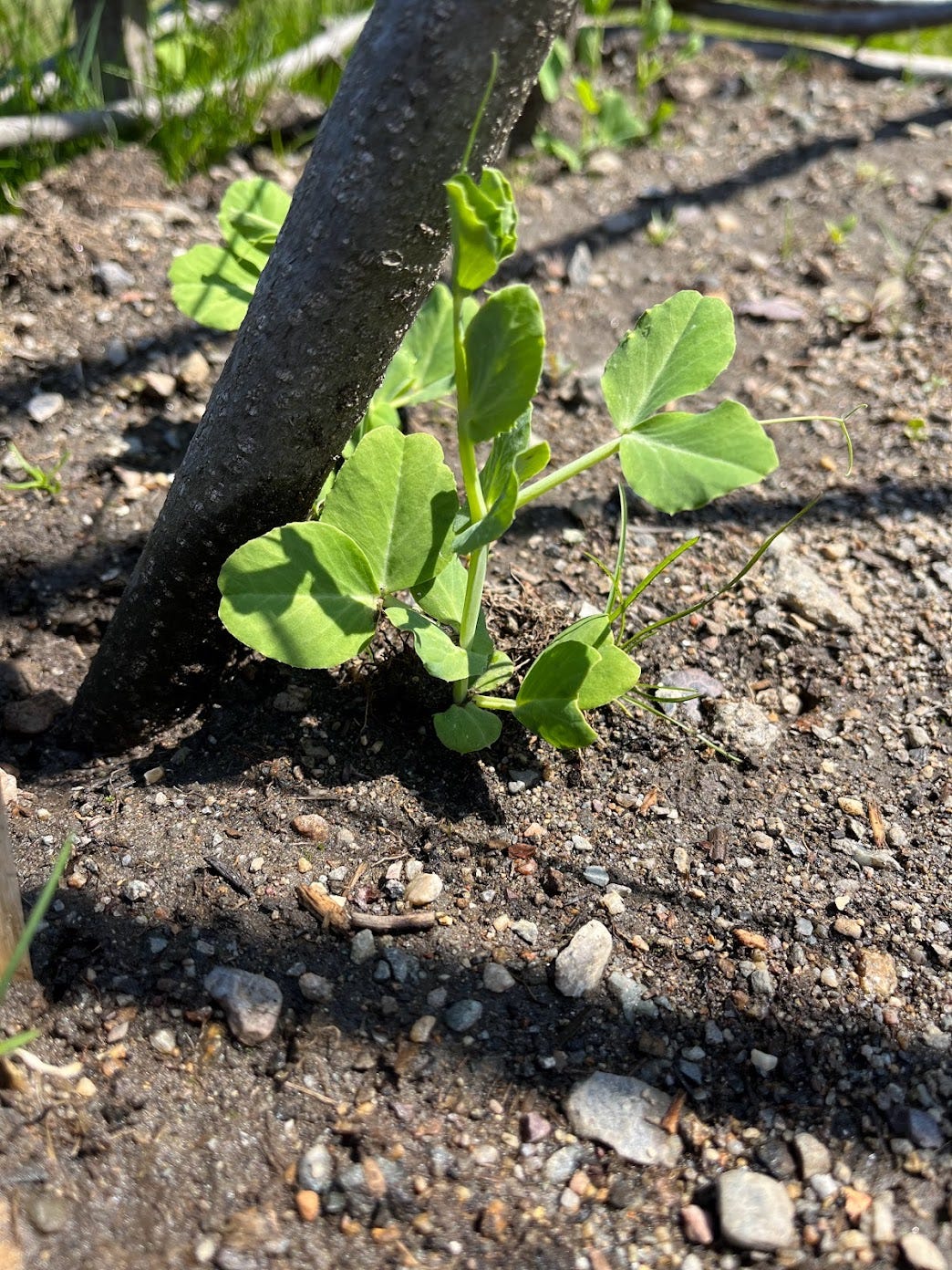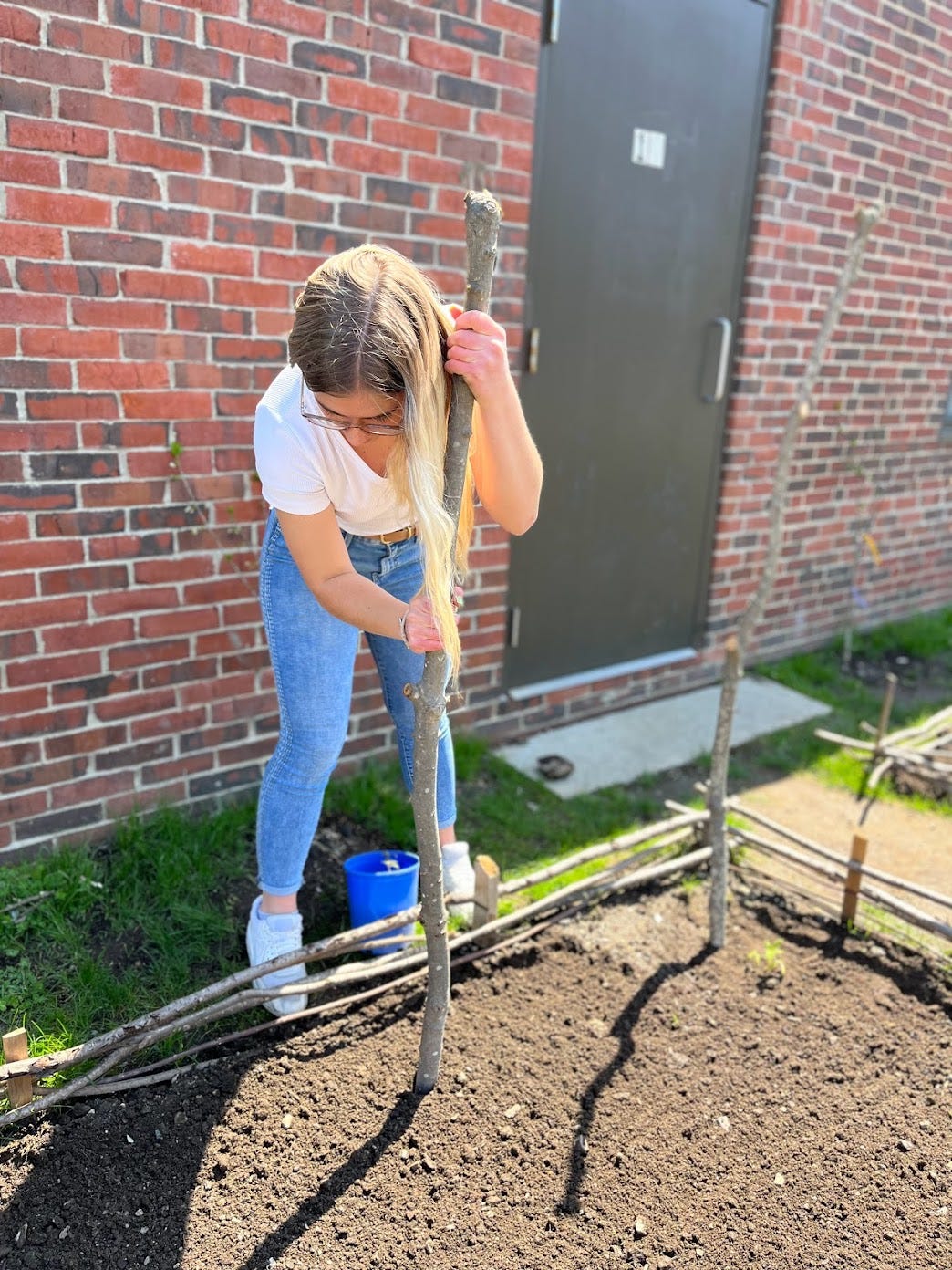Planting Out
I’m a teacher. The tangible benefits of gardening are only part of what I am going for.

T.S. Eliot called April the cruelest month. This signals to me that he must have known something about gardening because, in New England, April is a month of cold days, cold soil, and boiling ambitions.
The students were constantly pestering me about when we would actually be planting out some of our seedlings. Our chemistry teacher had raised quite a few tomatoes, summer squash, and kale from seed as part of a project on acidity and acid rain. Three different groups of these seedlings were exposed to three different levels of acidity, and the ones that survived were gifted to us to plant out in the garden.
But tomatoes and summer squash hale from much warmer climates and, if you put them into cold soil when there is still a potential for frost, they will either die outright or stop growing, leaving themselves exposed to diseases and hungry slugs. As with many other things, the gardener’s main virtue when it comes to putting out seedlings is patience.
But finally, the day had come. It was mid-May and windy but warm. You can only really learn if the soil has heated up by testing it with your hands and, as we reached into the tilled earth and scooped up handfuls, it felt comfortable and benevolent. In addition to the gifts from the chemistry department, we’d bought chard, beets, Brussels sprouts, thyme, sage, and rosemary from a local organic farm. Armed with our trowels we drew some clean lines in the dirt and started planting.
I had to watch the eager students closely because, instinctively, we tend reach for the stem when we plant, shying away from the tender leaves. But doing so is a huge mistake. This is because, while a seedling can always produce more leaves, it has only one stem. If you break the stem when you are planting it out, the thing will never recover and your time and money will have been spent in vain. Counterintuitive as it may seem, you need to grip the young plants by the leaves and then lower them into the place you’ve prepared for them.

An alumnus of ours, who had graduated last year and went on to study sustainable agriculture in college, was back on campus to help us plant things out. He set down his coffee mug on our little fieldstone wall and knelt down beside one of the waddle-fenced beds. “This is the best thing the school has ever done,” he said.
I agreed, but for a different reason than the one he probably had in mind. An organic veg garden will not, on its own, tip our campus that much closer to biological regeneration. Vegetable gardens attract all manner of living things (some desirable, some not!) and, if managed well and organically, will probably have a net positive effect on the local biome. But, compared to the concentrated planting of native species, ridding our campus of cut grass, or practicing systematic water collection, its actual ecological impact will be relatively small. But I’m a teacher. The tangible benefits are only part of what I am going for. All of those land management victories can, with luck, come in time. But the first harvest I’d actually hoped to reap was kneeling here beside me. If the garden had not been here, this student’s interest in our campus might have evaporated on graduation day. Yet here he was, in his spare time, putting a trowel in the dirt. He was not elsewhere but here, in the place we had prepared for him.




